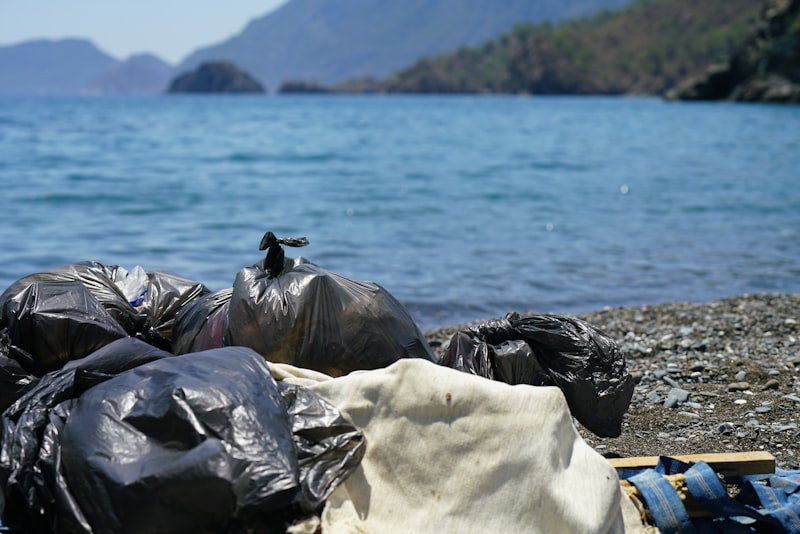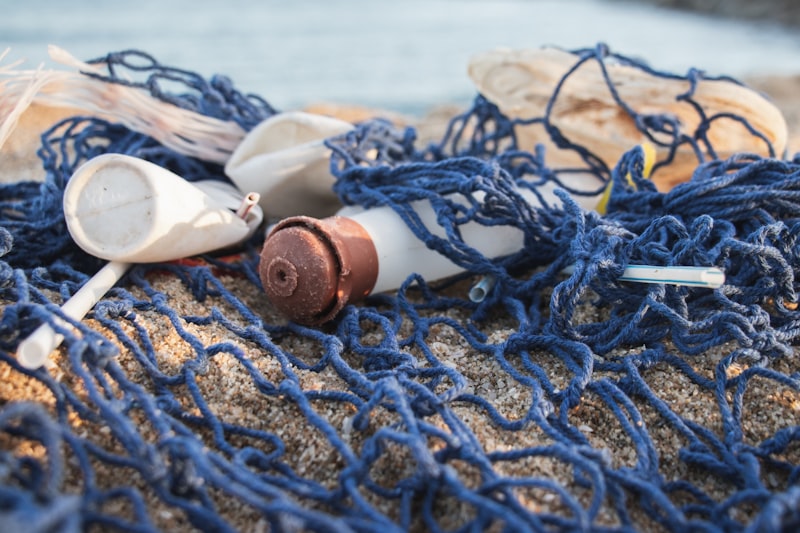Plastics, designed to be durable, persist in the environment for hundreds of years. This persistence means that once plastic enters the ocean, it remains a persistent threat to marine life for a long time. Marine animals often mistake plastic debris for food. Sea turtles, for instance, might confuse a floating plastic bag with a jellyfish, a common part of their diet. When ingested, plastic can block their digestive tract, leading to malnutrition, internal injuries, and death.
Moreover, plastics can leach harmful chemicals into the water, posing additional risks to marine organisms. These chemicals can disrupt hormones and reproductive systems in marine life, affecting their ability to reproduce and survive.
The issue extends beyond individual animals to entire species and ecosystems. Coral reefs, often referred to as the rainforests of the sea, are particularly vulnerable. Plastic debris can smother coral, blocking out sunlight and hindering their growth. As corals struggle, so do the countless species that depend on them for food and shelter.
Addressing plastic pollution requires a concerted effort on a global scale. Initiatives to reduce single-use plastics, improve waste management systems, and promote recycling are crucial steps toward mitigating this environmental crisis. By raising awareness and taking action, we can safeguard our oceans and the incredible diversity of life they support. Together, we can make a difference and ensure a healthier future for marine ecosystems worldwide.
Beyond the Surface: How Plastic Pollution Threatens Marine Ecosystems
In the vast expanse of our oceans, plastic debris acts as a silent predator. Marine animals often mistake plastic items for food, leading to ingestion that can be fatal. From seabirds to sea turtles, these creatures suffer from blocked digestive tracts, malnutrition, and internal injuries caused by ingesting plastic particles. The consequences ripple through the food chain, affecting larger predators and, ultimately, humans who depend on seafood.
Moreover, the durability of plastic works against nature’s decomposition processes. Unlike organic materials, plastic takes hundreds of years to break down, persisting in the environment long after it’s discarded. This longevity means that even a single piece of plastic can continue to pose a threat for generations of marine life.
Beyond its physical impact, plastic pollution also leaches harmful chemicals into the water, altering the marine ecosystem’s delicate balance. These chemicals can disrupt hormones in marine animals, affecting reproduction and growth rates. As plastics degrade under sunlight and wave action, they release toxins like bisphenol A (BPA) and polychlorinated biphenyls (PCBs), posing further risks to aquatic life.
Efforts to mitigate plastic pollution are critical but challenging. Cleaning up existing debris and reducing plastic use are crucial steps, but long-term solutions require global cooperation and innovation in waste management and recycling technologies. From grassroots beach clean-ups to international agreements on plastic waste reduction, every effort counts in safeguarding our oceans’ future.
Understanding the depth of plastic pollution goes beyond visual reminders of littered shores—it’s about recognizing the interconnectedness of marine life and the urgent need for sustainable practices. By addressing plastic pollution at its source and fostering a culture of environmental stewardship, we can strive towards cleaner oceans and healthier ecosystems for generations to come.
Silent Killers: The Devastating Effects of Ocean Plastic on Marine Animals
Plastic debris, whether it’s large items like fishing nets or tiny microplastics, poses multiple dangers to marine animals. Entanglement in plastic nets can lead to suffocation, immobilization, or severe injuries, trapping creatures that rely on swift movement for survival. Microplastics, often invisible to the naked eye, infiltrate the food chain. They accumulate in the tissues of fish, birds, and other marine organisms, carrying toxic chemicals and disrupting their biological functions.

The consequences ripple throughout the ecosystem. Marine animals that ingest plastic can suffer from internal injuries, digestive blockages, and starvation due to false satiation from a stomach full of indigestible waste. The chemicals leached by plastics into the seawater further contaminate the environment, affecting not only marine life but also human health.
Efforts to mitigate ocean plastic pollution are crucial but challenging. Cleaning up existing debris and preventing new waste from entering the oceans require global cooperation and innovative solutions. From biodegradable alternatives to strict waste management policies, various approaches aim to curb the flow of plastics into our seas.
Awareness plays a vital role in this fight. Understanding the devastating effects of ocean plastic on marine animals can inspire individuals, communities, and governments to take action. Each piece of plastic removed from the ocean is a step towards safeguarding marine biodiversity and ensuring a healthier future for our oceans.
The battle against ocean plastic pollution is ongoing, demanding continuous efforts and commitment from all sectors of society. By addressing this issue head-on, we can protect marine animals from the silent killers lurking beneath the waves.
Plastic Armageddon: Unveiling the Hidden Toll on Marine Life
Have you ever wondered what happens to all the plastic we use daily? It’s easy to toss a plastic bottle or bag without a second thought, but the impact on our oceans and marine life is profound and often unseen. This phenomenon, dubbed “Plastic Armageddon,” reveals a devastating toll on marine ecosystems worldwide.
Plastics, notorious for their durability, persist in the environment for hundreds of years. When plastics end up in the ocean, they break down into smaller fragments known as microplastics. These tiny particles infiltrate every corner of marine habitats, from the deepest trenches to the shores we love to visit. Marine animals, from majestic whales to tiny plankton, mistake these fragments for food. The consequences are dire, leading to internal injuries, malnutrition, and often death.
Imagine a sea turtle mistaking a floating plastic bag for a jellyfish. Unable to digest it, the plastic clogs its digestive system, leaving the turtle to starve despite a full belly. This scenario is tragically common, illustrating just one way plastics threaten marine life.
But it’s not just ingestion that harms marine creatures. Entanglement in plastic debris, such as discarded fishing nets, traps marine mammals and seabirds, leading to injuries, infections, and often fatalities. Picture a dolphin struggling to swim freely with a plastic ring around its fin, slowly succumbing to the weight and drag of human waste.
Even more insidious are the chemical pollutants that plastics leach into the water. These toxins accumulate in the tissues of marine animals, magnifying up the food chain to eventually reach human consumers. So, that plastic bottle you used once might end up contaminating seafood on your plate, affecting not just marine life but our own health.
Addressing Plastic Armageddon requires a global effort. Innovations in biodegradable materials, recycling infrastructure improvements, and heightened consumer awareness all play pivotal roles in combating this crisis. Each small change in our daily habits can collectively make a monumental difference in preserving our oceans for future generations.
From Oceans to Shores: Tracing the Path of Plastic Pollution
Imagine standing on a pristine beach, waves gently lapping at your feet, and as you look around, you notice something unsettling. Bits of plastic debris scattered along the shoreline, a stark reminder of the global issue of plastic pollution. This modern-day environmental challenge spans from the depths of our oceans to the very shores we walk on, leaving a trail of ecological harm in its wake.
Plastic pollution originates from various sources, primarily from land-based activities. Everyday items like plastic bags, bottles, and packaging find their way into rivers and streams, eventually reaching the ocean through runoff. Once in the marine environment, these plastics undergo a transformation. The sun’s UV rays and the churning waves break down larger pieces into smaller microplastics, making them even more pervasive and difficult to remove.
The impact of plastic pollution is profound and widespread. Marine wildlife often mistake plastic debris for food, leading to ingestion and entanglement. From seabirds to whales, the consequences are devastating, causing injury, illness, and sometimes death. The ecological balance of marine ecosystems is disrupted, affecting biodiversity and the delicate food chain that supports life underwater.
Efforts to mitigate plastic pollution are underway globally. Organizations and governments are advocating for reduced plastic use, improved waste management systems, and innovative solutions like biodegradable plastics. Public awareness campaigns highlight the importance of recycling and responsible consumption, aiming to change behaviors and reduce plastic waste at the source.
As we strive to tackle this monumental challenge, each of us has a role to play. By making conscious choices in our daily lives, such as opting for reusable alternatives and supporting initiatives that promote environmental stewardship, we can collectively make a difference. Together, we can stem the tide of plastic pollution and safeguard our oceans and shores for generations to come.
Underwater Crisis: How Plastic Pollution Is Choking Marine Habitats
Picture this: a serene underwater world teeming with vibrant marine life, where every creature plays a vital role in the delicate ecosystem. Now, imagine this same scene marred by drifting plastic bags, tangled fishing nets, and discarded bottles. This is the harsh reality of our oceans today—a crisis silently unfolding beneath the waves.
Plastic pollution has emerged as one of the greatest threats to marine habitats worldwide. From the shallows to the ocean’s deepest trenches, no ecosystem is immune. Every year, millions of tons of plastic waste find their way into our seas, brought in by currents, wind, and direct dumping.
The impact is devastating. Marine animals, from majestic sea turtles to agile dolphins, often mistake plastic debris for food or become entangled in it. This not only leads to fatal injuries but also disrupts their natural behavior and reproductive cycles. Coral reefs, vital nurseries of the sea, are smothered under blankets of plastic, suffocating and dying off at alarming rates.
Beyond its visible toll on wildlife, plastic pollution poses grave dangers to human health. Through the food chain, toxic chemicals from plastics can accumulate in seafood, eventually reaching our dinner plates. The consequences of this silent invasion are far-reaching, affecting economies reliant on fishing and tourism as well.
Addressing the crisis demands urgent action on multiple fronts. Efforts to reduce single-use plastics, promote recycling, and clean up our shorelines are crucial steps. Public awareness and advocacy play pivotal roles in pressuring governments and corporations to adopt sustainable practices and policies.
In the face of this underwater crisis, each of us has a role to play. Whether through mindful consumption, supporting legislation for cleaner oceans, or participating in beach clean-ups, our collective actions can turn the tide against plastic pollution. Together, we can ensure that future generations inherit oceans thriving with life, not drowning in plastic.
Saving Nemo: Can Marine Conservation Combat Plastic Pollution?
Have you ever wondered about the fate of our oceans, especially with the growing concern over plastic pollution? The quest to “Save Nemo” goes beyond just preserving a beloved character; it’s about safeguarding our marine ecosystems from the pervasive threat of plastic waste. Marine conservationists worldwide are rallying to combat this pressing issue, understanding that the survival of underwater life hinges on our actions today.
Plastic pollution poses a significant danger to marine life, from entanglement in discarded fishing nets to ingestion of plastic debris mistaken for food. The impact on species like clownfish, famously portrayed as Nemo in popular culture, underscores the urgency for conservation efforts. These vibrant creatures face perilous consequences when their habitats become littered with non-biodegradable waste.
Efforts to mitigate plastic pollution encompass a range of strategies, from community beach clean-ups to global policy initiatives aimed at reducing plastic production and consumption. Educational campaigns raise awareness about responsible waste disposal and the importance of recycling. By promoting sustainable practices, we empower individuals to make a tangible difference in preserving marine biodiversity.

Imagine a world where our oceans gleam with clarity, where coral reefs thrive undisturbed by floating debris. This vision drives conservationists to innovate solutions that tackle plastic pollution at its source. By advocating for eco-friendly alternatives and supporting legislation that prioritizes environmental stewardship, we pave the way for a cleaner, healthier marine environment.
In the battle to “Save Nemo,” every action counts. Whether it’s refusing single-use plastics or supporting organizations dedicated to marine conservation, each step contributes to a collective effort to safeguard our oceans for future generations. Together, we can turn the tide against plastic pollution and ensure that the underwater world remains a vibrant sanctuary of life.
This article aims to inform and inspire action, using a conversational tone and engaging language to captivate readers interested in environmental conservation and marine life protection.
The Plastic Pandemic: Understanding Its Grasp on Marine Wildlife
Imagine a sea turtle gliding gracefully through the azure waters, mistaking a floating plastic bag for a jellyfish, a vital source of food. This scenario plays out far too often as marine creatures encounter plastic debris that resembles their natural prey. The consequences are dire: ingestion of plastic can lead to suffocation, starvation, and internal injuries, often resulting in a slow and painful death.
Beyond entanglement and ingestion, plastic pollution poses broader ecological risks. As plastics break down into microplastics under the relentless sun and churning waves, they permeate every level of the marine food chain. From zooplankton to large predators like sharks and whales, no creature is spared from the toxic influence of these microscopic invaders.
The scale of this environmental crisis is staggering. Each year, millions of tons of plastic find their way into our oceans, transported by currents and winds from all corners of the globe. What begins as discarded packaging or abandoned fishing gear on land ultimately converges in vast garbage patches, like the infamous Great Pacific Garbage Patch, disrupting marine habitats on a monumental scale.
The urgency to address this issue cannot be overstated. Efforts to reduce single-use plastics, improve waste management practices, and promote ocean conservation are crucial steps in mitigating the plastic pandemic. As individuals, we hold the power to make a difference through conscious consumer choices and advocacy for policies that prioritize the health of our oceans.
In the battle against plastic pollution, awareness is our strongest weapon. By understanding the grasp of this crisis on marine wildlife, we can take meaningful action to preserve the beauty and diversity of our oceans for generations to come.
Frequently Asked Questions
How can plastic waste in oceans affect human health?
Learn how plastic waste in oceans can impact human health, exploring the direct and indirect consequences of marine plastic pollution on food safety, water contamination, and ecosystem disruption. Understand the potential health risks posed by ingesting microplastics through seafood consumption and the broader environmental implications for public health.
How does plastic pollution harm marine ecosystems?
Plastic pollution poses significant harm to marine ecosystems by entangling marine life, causing ingestion leading to internal injuries and death, and releasing toxic chemicals that disrupt marine food chains.
What are microplastics, and how do they impact marine organisms?
Learn about microplastics and their effects on marine life. Discover how these tiny plastic particles, often less than 5mm in size, can harm marine organisms when ingested or absorbed. Explore the environmental consequences and ongoing research efforts to mitigate their impact.
What are some effective solutions to reduce plastic pollution in marine environments?
Explore effective solutions to diminish plastic pollution in marine environments. Learn practical methods such as promoting recycling, implementing strict waste management policies, advocating for plastic alternatives, and supporting ocean cleanup initiatives.
What are the main types of marine life affected by plastic pollution?
Learn about the main types of marine life impacted by plastic pollution, including seabirds, turtles, marine mammals, and fish. Understand how plastic debris poses threats through ingestion, entanglement, and habitat disruption.


